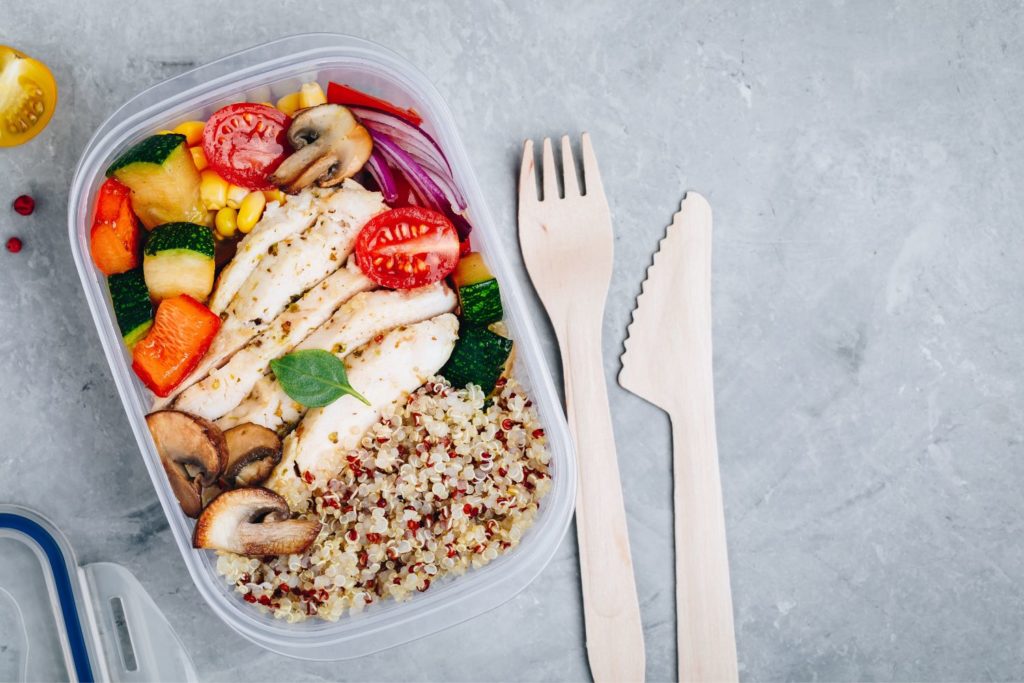This post contains affiliate links, meaning, at no additional cost to you, if you click through and make a purchase, I may receive a commission. I only share items that I truly love and use myself. For more information please see my disclosures here.
Be sure to listen to the
She’s Got It Together Podcast!
Living with diabetes can be challenging, especially when it comes to meal planning. But fear not! With the right strategies, you can create delicious and nutritious meals that help manage your blood sugar levels. Today, we’re diving into the world of diabetic meal planning, focusing on carb counting, smart food choices, and tips to keep your meals exciting and blood sugar-friendly. Let’s get started!
Why Diabetic Meal Planning is Essential
First things first, why is diabetic meal planning so important? Here are a few fantastic reasons:
- Blood Sugar Control: Keep your blood sugar levels stable and avoid spikes.
- Nutrient Balance: Ensure you’re getting the right mix of nutrients.
- Prevent Complications: Reduce the risk of diabetes-related complications.
- Variety and Enjoyment: Enjoy a diverse range of foods while managing your condition.
Step 1: Understand Carbohydrates and Carb Counting
Carbohydrates have the most significant impact on blood sugar levels, so it’s essential to understand how to manage them. Here are the basics:
- Carbs 101: Carbohydrates are found in fruits, vegetables, grains, legumes, and dairy products.
- Carb Counting: Learn to count carbs to keep your blood sugar levels in check. Generally, aim for 45-60 grams of carbs per meal, but consult with your healthcare provider for personalized advice.
Step 2: Choose the Right Foods
When planning your meals, focus on foods that help manage blood sugar levels. Here are some smart choices:
- Non-Starchy Vegetables: Spinach, broccoli, peppers, and cauliflower.
- Lean Proteins: Chicken, turkey, fish, tofu, and legumes.
- Healthy Fats: Avocado, nuts, seeds, and olive oil.
- Whole Grains: Brown rice, quinoa, oats, and whole wheat pasta.
- Low-Glycemic Fruits: Berries, cherries, and apples.
- Dairy Alternatives: Unsweetened almond milk, Greek yogurt, and cheese.
Step 3: Plan Balanced Meals
A balanced meal should include a mix of protein, carbohydrates, and fats. Here’s a simple formula to follow:
- Half Plate: Non-starchy vegetables.
- Quarter Plate: Lean protein.
- Quarter Plate: Whole grains or starchy vegetables.
- Healthy Fats: Include a small amount, like a drizzle of olive oil or a few nuts.

Sample Diabetic-Friendly Menu
To get you started, here’s a sample menu that includes breakfast, lunch, dinner, and snacks for a day:
Breakfast: Greek Yogurt Parfait (Approx. 30g carbs)
- 1 cup Greek yogurt
- 1/2 cup mixed berries
- 1 tbsp chia seeds
- 1 tsp honey
Lunch: Quinoa Salad (Approx. 45g carbs)
- 1/2 cup cooked quinoa
- 1/2 cup chickpeas
- 1/4 cup chopped bell peppers
- 1/4 cup cherry tomatoes
- 1/4 avocado, diced
- Dressing: lemon juice, olive oil, salt, and pepper
Snack: Apple Slices with Almond Butter (Approx. 15g carbs)
- 1 apple, sliced
- 1 tbsp almond butter
Dinner: Baked Salmon with Veggies (Approx. 50g carbs)
- 1 salmon fillet
- 1 cup broccoli florets
- 1 cup sweet potato, cubed
- 1 tbsp olive oil
- Spices: salt, pepper, garlic powder
Snack: Cottage Cheese with Berries (Approx. 10g carbs)
- 1/2 cup cottage cheese
- 1/2 cup mixed berries
Step 4: Create Your Grocery List
Once your meals are planned, create a grocery list. Organize it by sections (produce, dairy, pantry items, etc.) to make shopping more efficient. This way, you’ll ensure you’re only buying what you need and minimizing waste.
Step 5: Prep Ahead
Meal prepping can save you tons of time during the week. Here are some ideas:
- Chop Veggies: Pre-chop veggies for salads, stir-fries, or snacks.
- Cook Grains and Proteins: Cook a big batch of quinoa, brown rice, or chicken breasts.
- Batch Cooking: Make large batches of soups, stews, or casseroles to freeze.
Tips for Successful Diabetic Meal Planning
- Keep It Simple: Focus on recipes with minimal ingredients and steps.
- Be Realistic: Plan meals you know you’ll have time to cook.
- Use Leftovers: Plan for leftovers to save time and reduce waste.
- Stay Hydrated: Drink plenty of water throughout the day.
- Monitor Your Blood Sugar: Keep track of your blood sugar levels and adjust your meals as needed.
Common Challenges and Solutions
Challenge 1: Cravings for Sweets
- Solution: Satisfy your sweet tooth with low-carb treats like Greek yogurt with berries or a piece of dark chocolate.
Challenge 2: Time Constraints
- Solution: Use batch cooking and meal prep to save time during the week. Opt for quick and easy recipes on busy nights.
Challenge 3: Eating Out
- Solution: Research restaurant menus ahead of time and choose dishes that fit your carb limits. Don’t be afraid to ask for modifications to fit your dietary needs.
Helpful Resources
Here are some fantastic websites to help you on your diabetic meal planning journey:
- Diabetes.org: Resources, recipes, and tips for managing diabetes.
- EatingWell.com: Nutritious recipes and meal planning tips.
- TheKitchn.com: Tips and recipes for healthy eating.
- Skinnytaste.com: Healthy recipes with a focus on meal prep.
- MyFitnessPal.com: Track your carbs and other nutrients.
Diabetic meal planning doesn’t have to be complicated or time-consuming. With a little bit of planning and some smart strategies, you can enjoy nutritious, balanced meals that help manage your blood sugar levels. Remember, the key is to keep things simple, use versatile ingredients, and make the most of your time.


